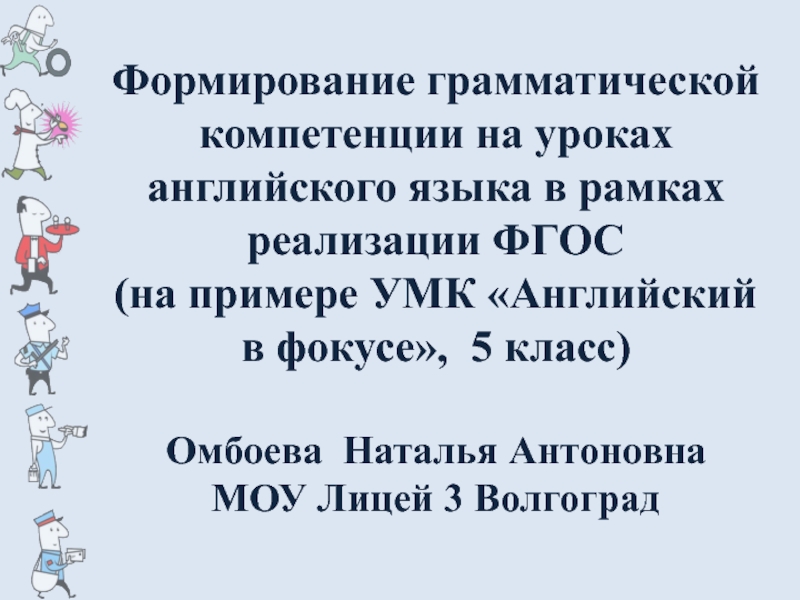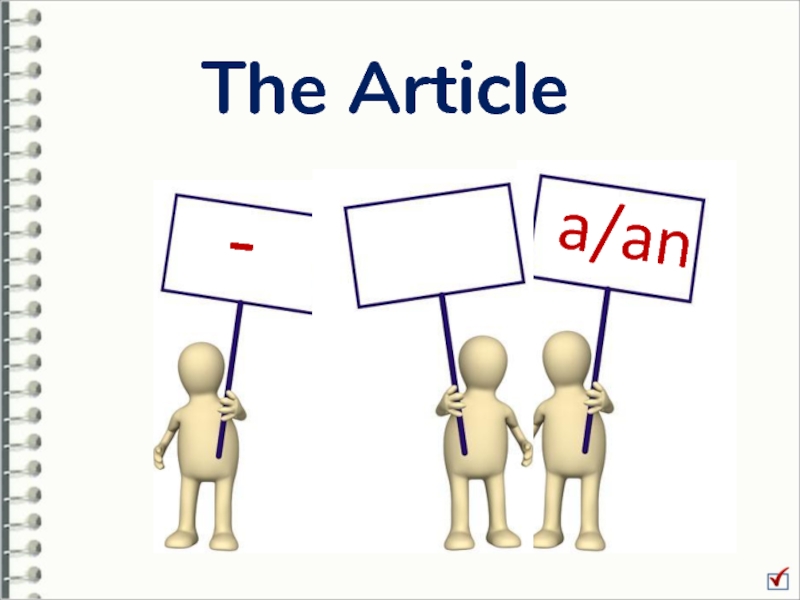translation studies and contrastive linguistics named after Hryhoriy Kochur
Nadiya Andreichuk, associate-professor
nadiyaan@gmail.com
- Главная
- Разное
- Дизайн
- Бизнес и предпринимательство
- Аналитика
- Образование
- Развлечения
- Красота и здоровье
- Финансы
- Государство
- Путешествия
- Спорт
- Недвижимость
- Армия
- Графика
- Культурология
- Еда и кулинария
- Лингвистика
- Английский язык
- Астрономия
- Алгебра
- Биология
- География
- Детские презентации
- Информатика
- История
- Литература
- Маркетинг
- Математика
- Медицина
- Менеджмент
- Музыка
- МХК
- Немецкий язык
- ОБЖ
- Обществознание
- Окружающий мир
- Педагогика
- Русский язык
- Технология
- Физика
- Философия
- Химия
- Шаблоны, картинки для презентаций
- Экология
- Экономика
- Юриспруденция
Lecture 2 Methods and Procedures of Lexicological Research презентация
Содержание
- 1. Lecture 2 Methods and Procedures of Lexicological Research
- 2. Lecture 2 Methods and Procedures of Lexicological
- 3. Plan 1. Scientific standard – theory
- 4. Scientific standard – theory – method
- 5. theory and model A theory is a
- 6. induction a scientist must begin by collecting
- 8. ways of approaching data
- 9. Observation the process of scientific
- 10. classification orderly arrangement of the data obtained
- 11. generalization collection of data and their orderly
- 12. verifying process One of the fundamental tests
- 13. Methods of analysis used in lexicology
- 14. Immediate constituents analysis The theory of
- 15. Immediate constituents analysis Successive segmentation results in
- 16. Immediate constituents analysis A sample analysis which
- 17. Immediate constituents analysis Thus at the first
- 18. Immediate constituents analysis The two first stages
- 19. Immediate constituents analysis To sum up: as
- 20. Distributional analysis In linguistics, distributional analysis is
- 21. Many problems with his approach are well
- 22. Z. Harris In his theory, the analysis
- 23. Z. Harris For example, a and
- 24. Distributional analysis in its various forms is
- 25. Distributional analysis It is assumed that the
- 26. Distributional analysis Thus it can be observed
- 27. Distributional analysis Compare also the meaning of
- 28. Distributional analysis not only words in word-groups
- 29. Distributional analysis Distributional pattern as such
- 30. Distributional analysis The distributional pattern itself seems
- 31. Distributional analysis To conclude, distribution defined as
- 32. Transformational analysis repatterning of various distributional
- 33. Transformational analysis e. g. A pattern
- 34. Transformational analysis The rules of transformation
- 35. Transformational analysis I.Permutation - the repatterning on
- 36. Transformational analysis II. Replacement - the substitution
- 37. Transformational analysis III. Addition (or expansion) may
- 38. Transformational analysis IV. Deletion - a procedure
- 39. Componental analysis an attempt to describe the
- 40. Componental analysis e. g. In the lexical
- 41. Componental analysis Componental analysis is practically always
- 42. Statistical analysis Modern structural ways of analysis
- 43. Statistical analysis Computation is useful only if
- 44. Statistical analysis A single observation may not
- 45. Statistical analysis Probably the best known result
- 46. Statistical analysis Successful efforts have been made
- 47. Summing up no procedures or techniques exist
Слайд 2Lecture 2
Methods and Procedures of Lexicological Research
Contrast is the occurance
of
different elements
to create interest
to create interest
Слайд 3Plan
1. Scientific standard – theory – method
2. Stages of linguistic
investigation
3. Methods of analysis used in lexicology
3.1. The IC analysis
3.2. Distributional analysis
3.3. Transformational procedures
3.4. Componental analysis
4. Statistical methods of analysis
5. Contrastive analysis
3. Methods of analysis used in lexicology
3.1. The IC analysis
3.2. Distributional analysis
3.3. Transformational procedures
3.4. Componental analysis
4. Statistical methods of analysis
5. Contrastive analysis
Слайд 4
Scientific standard – theory – method
Linguistics as an empirical science is
supposed to be based on the following minimal standards:
The inquiry must deal with perceivable data of a certain phenomenon.
The statement about the phenomenon (hypotheses) must be objective.
The statements must be logical and coherent
They must be systematically ordered (in addition to coherence).
Statements must be formulated so that they can be proven wrong or inadequate (if they are).
The inquiry must deal with perceivable data of a certain phenomenon.
The statement about the phenomenon (hypotheses) must be objective.
The statements must be logical and coherent
They must be systematically ordered (in addition to coherence).
Statements must be formulated so that they can be proven wrong or inadequate (if they are).
Слайд 5theory and model
A theory is a system of hypotheses for describing
and/or explaining a certain area of objects. Each theory must satisfy certain requirements, such as consistency, completeness, adequacy, simplicity.
A model is a formal representation of the structural and functional characteristics of an object of study. Models are used:
to explain a theory,
to simulate a process of research
to illustrate the functioning of an object of study.
A model is a formal representation of the structural and functional characteristics of an object of study. Models are used:
to explain a theory,
to simulate a process of research
to illustrate the functioning of an object of study.
Слайд 6induction
a scientist must begin by collecting observations or produce data by
experiments
After he has made a large and sufficient number of such observations or experiments, he proceeds to a generalization about these data. This generalization is expected to be supported by the original data. After several attempts at generalizing he may proceed to a new (modified) hypothesis by looking at new data. The modified hypothesis should cover the old original data and the new data. This way of arriving at hypotheses is called inductive.
After he has made a large and sufficient number of such observations or experiments, he proceeds to a generalization about these data. This generalization is expected to be supported by the original data. After several attempts at generalizing he may proceed to a new (modified) hypothesis by looking at new data. The modified hypothesis should cover the old original data and the new data. This way of arriving at hypotheses is called inductive.
Слайд 7
deduction
The scientist has some ideas, some knowledge, or may be interested
in a problem (including some knowledge) as the input to his theory-construction. How he comes to that knowledge is of no theoretical consequence or importance. The scientist then formulates a first working hypothesis as a tentative answer to his problem. A good hypothesis is based on common scientific standards. It is then tested against a collection of observations or experimental data and might be modified on this data basis. This way is called deductive insofar as it assumes that the hypothesis is derived (deduced) from already existent knowledge and then tested by empirical data
Слайд 9Observation
the process of scientific investigation in the field of
lexicology may be subdivided into several stages.
Observation is an early and basic phase − the centre of what is called the inductive method of inquiry. All factual statements, i.e. statements capable of objective verification, are based on observation.
Observation is an early and basic phase − the centre of what is called the inductive method of inquiry. All factual statements, i.e. statements capable of objective verification, are based on observation.
Слайд 10classification
orderly arrangement of the data obtained through observation.
e.g. it is
observed that in English nouns the suffix morpheme -er is added to verbal stems (speak + -er, teach + -er etc.) and noun stems (village + -er, London + -er, etc.), and that -er also occurs in such non-derived words as mother, father etc.
Accordingly, all the nouns in -er may be classified into two types − derived and simple words, and the derived words may be subdivided into two groups according to their stems.
Accordingly, all the nouns in -er may be classified into two types − derived and simple words, and the derived words may be subdivided into two groups according to their stems.
Слайд 11generalization
collection of data and their orderly arrangement must eventually lead to
formulation of a hypothesis, rule or law. In our case, we can formulate a rule that derived nouns in -er may have either verbal or noun stem. The suffix -er in combination with adjectival or adverbial stems cannot form nouns (to dig -digger but big - bigger).
Слайд 12verifying process
One of the fundamental tests of the validity of a
generalization is whether or not this generalization is useful in making reliable predictions. We may predict, if we make use of the statistical analysis, that deverbal nouns with the suffix -er are more likely to be coined than the other types of nouns with this suffix.
Any linguistic generalization is to be followed by a verifying process where various procedures of linguistic analysis are applied. Selection of this or that particular procedure depends on the goal set before the investigator.
Any linguistic generalization is to be followed by a verifying process where various procedures of linguistic analysis are applied. Selection of this or that particular procedure depends on the goal set before the investigator.
Слайд 13Methods of analysis used in lexicology
The research methods applied in lexicology
have always been closely connected with the paradigms of linguistic research.
The development of structuralist ideas gave birth to the structural method which includes several types of analysis.
The development of structuralist ideas gave birth to the structural method which includes several types of analysis.
Слайд 14
Immediate constituents analysis
The theory of Immediate Constituents (IC) was originally elaborated
as an attempt to determine the ways in which lexical units are relevantly related to one another .
It was discovered that combinations of units are usually structured into hierarchial sets of binary constructions.
The fundamental aim of IC analysis is to segment a set of lexical units into two maximally independent sequences or ICs thus revealing the hierarchical structure of this set.
It was discovered that combinations of units are usually structured into hierarchial sets of binary constructions.
The fundamental aim of IC analysis is to segment a set of lexical units into two maximally independent sequences or ICs thus revealing the hierarchical structure of this set.
Слайд 15Immediate constituents analysis
Successive segmentation results in ultimate constituents (UC). i.e. two-facet
units that cannot be segmented into smaller units having both sound-form and meaning. The procedure was first suggested by L. Bloomfield [„Languageˮ] and was later developed by E. Nida [„Morphology. The Descriptive Analysis of Wordsˮ].
Слайд 16Immediate constituents analysis
A sample analysis which has become almost classical, being
repeated many times by many authors, is Bloomfield`s analysis of the word ungentlemanly. Comparing the word with the other utterances the listener recognises the morpheme un- as a negative prefix because he has often come across words built on the pattern un- + adjective stem: uncertain, unconscious, uneasy, unfortunate, unmistakable, unnatural. One can also come across the adjective gentlemanly.
Слайд 17Immediate constituents analysis
Thus at the first cut we obtain the following
immediate constituents: un – + gentlemanly.
If we continue our analysis we see that although gent occurs as a free form in low colloquial usage, no such words as lemanly may be found either as a free or as a bound constituent, so this time we have to separate the final morpheme. We are justified in so doing as there are many adjectives following the pattern noun stem + -ly, such as womanly masterly, scholarly, soldierly with the same semantic relationship of „having the quality of the person denoted by the stem”; we also have come across the noun gentleman in other utterances.
If we continue our analysis we see that although gent occurs as a free form in low colloquial usage, no such words as lemanly may be found either as a free or as a bound constituent, so this time we have to separate the final morpheme. We are justified in so doing as there are many adjectives following the pattern noun stem + -ly, such as womanly masterly, scholarly, soldierly with the same semantic relationship of „having the quality of the person denoted by the stem”; we also have come across the noun gentleman in other utterances.
Слайд 18Immediate constituents analysis
The two first stages of the analysis resulted in
separating a free and a bound form:
1) un- + gentlemanly, 2) gentleman + -ly.
The third cut has its peculiarities. The devision into gent- + -leman is obviously impossible as no such patterns exist in English, so the cut is gentle + man. A similar pattern is observed in nobleman, and so we state adjective stem + -man.
The word gentle is open to discussion. If we compare it with such adjectives as brittle, fertile, juvenile, little, noble, subtle and some more containing the suffix -le/-ile added to a bound stem, they form a pattern for our case.
1) un- + gentlemanly, 2) gentleman + -ly.
The third cut has its peculiarities. The devision into gent- + -leman is obviously impossible as no such patterns exist in English, so the cut is gentle + man. A similar pattern is observed in nobleman, and so we state adjective stem + -man.
The word gentle is open to discussion. If we compare it with such adjectives as brittle, fertile, juvenile, little, noble, subtle and some more containing the suffix -le/-ile added to a bound stem, they form a pattern for our case.
Слайд 19Immediate constituents analysis
To sum up: as we break the word we
obtain at any level only two ICs, one of which is the stem of the given word. All the time the analysis is based on the patterns characteristic of the English vocabulary. As a pattern showing the interdependence of all the constituents segregated at various stages we obtain the following formula:
un- + {[(gent- + -le) + -man] + -ly}
This method of analysis is extremely fruitful in discovering the derivational structure of words.
un- + {[(gent- + -le) + -man] + -ly}
This method of analysis is extremely fruitful in discovering the derivational structure of words.
Слайд 20Distributional analysis
In linguistics, distributional analysis is most commonly associated with the
name of Zelig Harris.
Слайд 21Many problems with his approach are well known:
the neglect of semantic
aspects of language and the lack of explicitness of his procedures,
syntactic rules manifest themselves in distributional patterns,
distributional analysis is the central concern of linguistics.
syntactic rules manifest themselves in distributional patterns,
distributional analysis is the central concern of linguistics.
Z. Harris
Слайд 22Z. Harris
In his theory, the analysis of distributional data consists of
two steps: „the setting up of elements, and the statement of the distribution of these elements relative to each otherˮ.
segments of repetitions of an identical utterance are called free variants of each other. More complicated entities such as phonemes, morphemes or syntactic categories are then built up from the initial elements by searching for groups of elements that do not contrast with each other, because they have identical distributions
segments of repetitions of an identical utterance are called free variants of each other. More complicated entities such as phonemes, morphemes or syntactic categories are then built up from the initial elements by searching for groups of elements that do not contrast with each other, because they have identical distributions
Слайд 23Z. Harris
For example,
a and an can be grouped into one
class „indefinite articleˮ since they occur in disjoined environments;
our and his can be grouped into one class
„ possessive pronoun” since they occur in identical environments.
our and his can be grouped into one class
„ possessive pronoun” since they occur in identical environments.
Слайд 24Distributional analysis
in its various forms is commonly used nowadays and is
treated on the level of not only formal but also semantic classes or subclasses of lexical units.
In other words, by this term we understand the position which lexical unit occupies or may occupy in the text or in the flow of speech.
Distributional analysis in lexicology aims to study lexical units in terms of their distribution, i.e. the immediate environment in the flow of speech.
In other words, by this term we understand the position which lexical unit occupies or may occupy in the text or in the flow of speech.
Distributional analysis in lexicology aims to study lexical units in terms of their distribution, i.e. the immediate environment in the flow of speech.
Слайд 25Distributional analysis
It is assumed that the meaning of any lexical unit
may be viewed as made up by the lexical meaning of its components and by the meaning of the pattern of their arrangement, i.e. their distributional meaning. This may perhaps be illustrated by the semantic analysis of polymorphic words. The word singer, e.g., has the meaning of ‘one who sings or is singing’ not only due to the lexical meaning of the stem sing- and the derivational morpheme -er (= active doer), but also because of the meaning of their distributional pattern. A different pattern of arrangement of the same morphemes *ersing changes the whole into a meaningless string of sounds.
Слайд 26Distributional analysis
Thus it can be observed that in a number of
cases words have different lexical meanings in different distributional patterns. e.g., the lexical meaning of the verb to treat in the following:
to treat somebody well, kindly, etc. — ‘to act or behave towards’ where the verb is followed by
a noun + an adverb
to treat somebody to ice-cream, champagne, etc. — ‘to supply with food, drink, entertainment, etc. at one’s own expence’ where the verb is followed by
a noun+the preposition to + another noun.
to treat somebody well, kindly, etc. — ‘to act or behave towards’ where the verb is followed by
a noun + an adverb
to treat somebody to ice-cream, champagne, etc. — ‘to supply with food, drink, entertainment, etc. at one’s own expence’ where the verb is followed by
a noun+the preposition to + another noun.
Слайд 27Distributional analysis
Compare also the meaning of the adjective ill in different
distributional structures, e.g. ill look, ill luck, ill health, etc. (ill+N — ‘bad’) and fall ill, be ill, etc. (V+ill — ’sick’).
The interdependence of distribution and meaning can be also observed at the level of word-groups. It is only the distribution of otherwise completely identical lexical units that accounts for the difference in the meaning of water tap and tap water. Thus, as far as words are concerned the meaning by distribution may be defined as an abstraction on the syntagmatic level.
The interdependence of distribution and meaning can be also observed at the level of word-groups. It is only the distribution of otherwise completely identical lexical units that accounts for the difference in the meaning of water tap and tap water. Thus, as far as words are concerned the meaning by distribution may be defined as an abstraction on the syntagmatic level.
Слайд 28Distributional analysis
not only words in word-groups but also whole word-groups may
acquire a certain denotational meaning due to certain distributional pattern to which this particular meaning is habitually attached.
For example, habitually the word preceding ago denotes a certain period of time (an hour, a month, a century, etc. ago) and the whole word-group denotes a certain temporal unit. In this particular distributional pattern any word is bound to acquire an additional lexical meaning of a certain period of time, e.g. a grief ago (E. Cummings), three cigarettes ago (A. Christie), etc.
For example, habitually the word preceding ago denotes a certain period of time (an hour, a month, a century, etc. ago) and the whole word-group denotes a certain temporal unit. In this particular distributional pattern any word is bound to acquire an additional lexical meaning of a certain period of time, e.g. a grief ago (E. Cummings), three cigarettes ago (A. Christie), etc.
Слайд 29
Distributional analysis
Distributional pattern as such seems to possess a component of
meaning not to be found in individual words making up the word-group or the sentence. Thus, the meaning ‘make somebody do smth by means of something’ cannot be traced back to the lexical meanings of the individual words in ‘to coax somebody into accepting the suggestion’.
Слайд 30Distributional analysis
The distributional pattern itself seems to impart this meaning to
the whole irrespective of the meaning of the verb used in this structure, i.e. in the pattern V+N+into+Ving verbs of widely different lexical meaning may be used. One can say, e.g., to kiss somebody into doing smth, to flatter somebody into doing smth, to beat somebody into doing something,
etc.; in all these word-groups one finds the meaning ‘to make somebody do something’ which is actually imparted by the distributional pattern.
etc.; in all these word-groups one finds the meaning ‘to make somebody do something’ which is actually imparted by the distributional pattern.
Слайд 31Distributional analysis
To conclude, distribution defined as the occurrence of a lexical
unit relative to other lexical units can be interpreted as co-occurrence of lexical items and the two terms can be viewed as synonyms.
It follows that by the term distribution we understand the aptness of a word in one of its meanings to collocate or to co-occur with a certain group, or certain groups of words having some common semantic component.
It follows that by the term distribution we understand the aptness of a word in one of its meanings to collocate or to co-occur with a certain group, or certain groups of words having some common semantic component.
Слайд 32Transformational analysis
repatterning of various distributional structures in order to discover difference
or sameness of meaning of practically identical distributional patterns .
As distributional patterns are in a number of cases polysemantic, transformational procedures are of help not only in the analysis of semantic sameness / difference of the lexical units but also in the analysis of the factors that account for their polysemy . Word-groups of identical distributional structure when repatterned show that the semantic relations between words and consequently the meaning may be different .
As distributional patterns are in a number of cases polysemantic, transformational procedures are of help not only in the analysis of semantic sameness / difference of the lexical units but also in the analysis of the factors that account for their polysemy . Word-groups of identical distributional structure when repatterned show that the semantic relations between words and consequently the meaning may be different .
Слайд 33Transformational analysis
e. g. A pattern "possessive pronoun "+"noun"(his car , his
failure , his arrest, his kindness )
According to transformational analysis the meaning of each word-group may be represented as :
he has a car, he failed, he was arrested, he is kind
In each of the cases different meaning is revealed : possession , action , passive action , quality
According to transformational analysis the meaning of each word-group may be represented as :
he has a car, he failed, he was arrested, he is kind
In each of the cases different meaning is revealed : possession , action , passive action , quality
Слайд 34Transformational analysis
The rules of transformation are rather strict and shouldn't be
identified with paraphrasing in the usual sense of the term There are many restrictions both on syntactic and lexical levels
Слайд 35Transformational analysis
I.Permutation - the repatterning on condition that the basic subordinative
relationships between words and word-stems of the lexical units are not changed
e. g. "His work is excellent " may be transformed into " his excellent work , the excellence of his work , he works excellently “
In the example given the relationships between lexical units and the stems of the notional words are essentially the same .
e. g. "His work is excellent " may be transformed into " his excellent work , the excellence of his work , he works excellently “
In the example given the relationships between lexical units and the stems of the notional words are essentially the same .
Слайд 36Transformational analysis
II. Replacement - the substitution of a component of the
distributional structure by a member of a certain strictly defined set of lexical units.
e. g. Replacement of a notional verb by an auxiliary or link verb (he will make a bad mistake and he will make a good teacher ). The sentences have identical distributional structure but only in the second one the verb "to make " can be substituted by " become " or " be ".
The fact of impossibility of identical transformations of distributionally identical structures is a formal proof of the difference in their meaning.
e. g. Replacement of a notional verb by an auxiliary or link verb (he will make a bad mistake and he will make a good teacher ). The sentences have identical distributional structure but only in the second one the verb "to make " can be substituted by " become " or " be ".
The fact of impossibility of identical transformations of distributionally identical structures is a formal proof of the difference in their meaning.
Слайд 37Transformational analysis
III. Addition (or expansion) may be illustrated by the application
of the procedure of addition to the classification of adjectives into two groups-adjectives denoting inherent and non-inherent qualities.
e. g. John is happy. John is tall.
If we add a word-group in Moscow, we shall see that "John is happy in Moscow” has meaning while the second one is senseless .
That is accounted by the difference in the meaning of adjectives denoting inherent (tall) and non-inherent (happy) qualities .
e. g. John is happy. John is tall.
If we add a word-group in Moscow, we shall see that "John is happy in Moscow” has meaning while the second one is senseless .
That is accounted by the difference in the meaning of adjectives denoting inherent (tall) and non-inherent (happy) qualities .
Слайд 38Transformational analysis
IV. Deletion - a procedure which shows whether one of
the words semantically subordinated to the other, e. g. the word-group "red flowers " may be deleted and transformed into "flowers " without making the sentence senseless : I like red flowers or I like flowers.
The other word-group "red tape " can't be deleted and transformed either into " I hate tape " or "I hate red " because in both transformed sentences the meaning of the phrase "red tape" means "bureaucracy" and it can't be divided into two parts.
The other word-group "red tape " can't be deleted and transformed either into " I hate tape " or "I hate red " because in both transformed sentences the meaning of the phrase "red tape" means "bureaucracy" and it can't be divided into two parts.
Слайд 39Componental analysis
an attempt to describe the meaning of words in terms
of a universal inventory of semantic components and their possible combinations.
In this analysis linguists proceed from the assumption that the smallest units of meaning are sememes or semes .
In this analysis linguists proceed from the assumption that the smallest units of meaning are sememes or semes .
Слайд 40Componental analysis
e. g. In the lexical item "woman" several sememes may
be singled out , such as human , not an animal, female , adult.
The analysis of the word "girl" will show the following sememes : human , female , young.
The last component of the two words differentiates them and makes impossible to mix up the words in the process of communication. It is classical form of revealing the work of componental analysis to apply them to the so called closed systems of vocabulary , for example , colour terms .
The analysis of the word "girl" will show the following sememes : human , female , young.
The last component of the two words differentiates them and makes impossible to mix up the words in the process of communication. It is classical form of revealing the work of componental analysis to apply them to the so called closed systems of vocabulary , for example , colour terms .
Слайд 41Componental analysis
Componental analysis is practically always combined with transformational procedures or
statistical analysis .The combination makes it possible to find out which of the meanings should be represented first of all in the dictionaries of different types and how the words should be combined in order to make your speech sensible
Слайд 42Statistical analysis
Modern structural ways of analysis are often combined with statistical
procedures making the whole approach more rigorous.
Statistics describes how things are on the average. For a modern linguist it is not enough to know that it is allowable for a given structure to appear, he is interested in its frequency, in how often it appears.
It is, however, naive to think that a mere attachment of numbers confers rigour on an argument, that giving percentage or adopting mathematical terminology automatically makes the study "exact", "objective", "scientific".
Statistics describes how things are on the average. For a modern linguist it is not enough to know that it is allowable for a given structure to appear, he is interested in its frequency, in how often it appears.
It is, however, naive to think that a mere attachment of numbers confers rigour on an argument, that giving percentage or adopting mathematical terminology automatically makes the study "exact", "objective", "scientific".
Слайд 43Statistical analysis
Computation is useful only if it follows certain rules of
mathematical statistics;
the scholar must be able to state his margin of error and to say in what relationship his data stand to the whole body of similar language phenomena.
There has been a considerable growth of interest and activity in statistical linguistics in the last decades.
Statistical approach is most helpful when we have large masses of data to analyse, and this is precisely the case with vocabulary study.
the scholar must be able to state his margin of error and to say in what relationship his data stand to the whole body of similar language phenomena.
There has been a considerable growth of interest and activity in statistical linguistics in the last decades.
Statistical approach is most helpful when we have large masses of data to analyse, and this is precisely the case with vocabulary study.
Слайд 44Statistical analysis
A single observation may not be reliable, whereas a correctly
executed statistical study shows trends, the most typical properties and correlations. It is true that some details are lost because statistical study is necessarily simplifying and abstract. But a general orientation may be gained, provided that the units for analysis are well chosen and sufficiently defined and that the factors we decide to take into consideration (or disregard) correspond to the purposes of the study
Слайд 45Statistical analysis
Probably the best known result so far achieved in the
field of statistical linguistics is the formula known as Zipf’s law. The formula states essentially that if the words in a long text are ranked in order of decreasing frequency of occurrence in the text, so that the most frequent word has the rank r=1, the next frequent has the rank r=2, and so forth, then the product of the rank r for any word in the text will be approximately the same constant c, where c depends on the length of the text. His other formula suggests that the number of meanings in any polysemantic word is proportional to the square root of its relative frequency.
Слайд 46Statistical analysis
Successful efforts have been made to apply certain statistical techniques
to the study of problems in historical lexicology. The statistical study of vocabulary is gaining more impetus every year. Counts are made for the vocabularies of great writers and average speakers. One of the most prominent representatives of statistical linguistics Pierre Guiraud has estimated that the "passive" vocabulary of an average educated person comprises about
20, 000 words.
20, 000 words.
Слайд 47Summing up
no procedures or techniques exist that may serve as panaceas
[ˌpænə'sɪə] for all the difficult problems — the method of investigation should be always chosen or evolved according to the particular task with which the investigator is confronted.
All methods aim at being impersonal and objective in the sense that they must lead to verifiable generalizations. In this effort to find verifiable relationships concerning typical contrastive shapes and arrangements of linguistic elements, functioning in a system, the study of vocabulary has turned away from chance observation and made considerable scientific progress.
All methods aim at being impersonal and objective in the sense that they must lead to verifiable generalizations. In this effort to find verifiable relationships concerning typical contrastive shapes and arrangements of linguistic elements, functioning in a system, the study of vocabulary has turned away from chance observation and made considerable scientific progress.

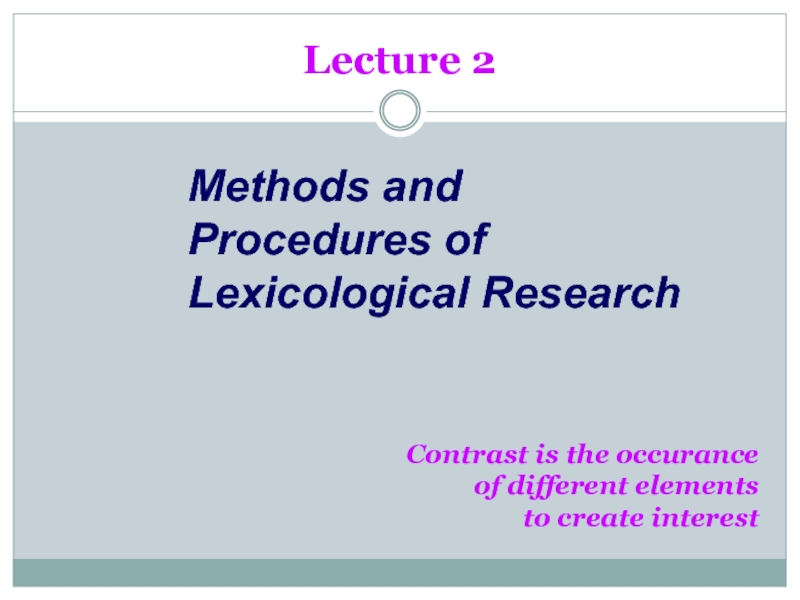
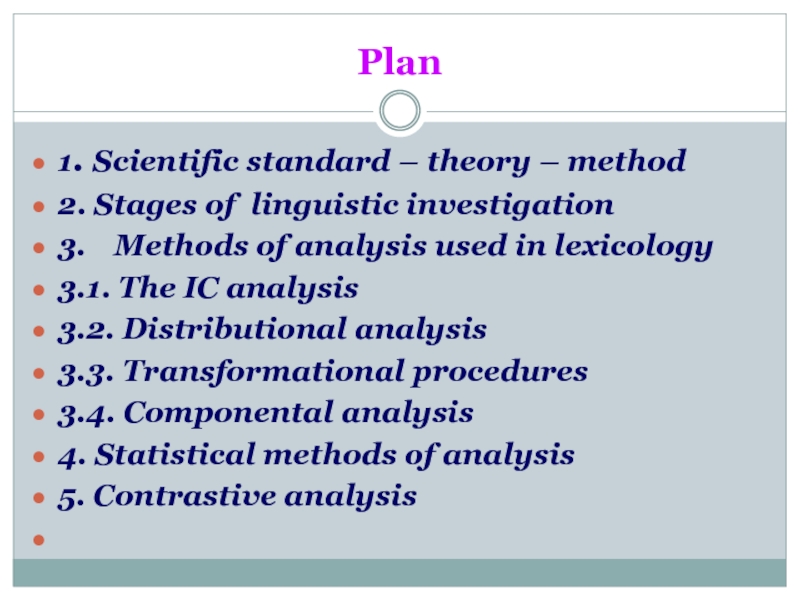
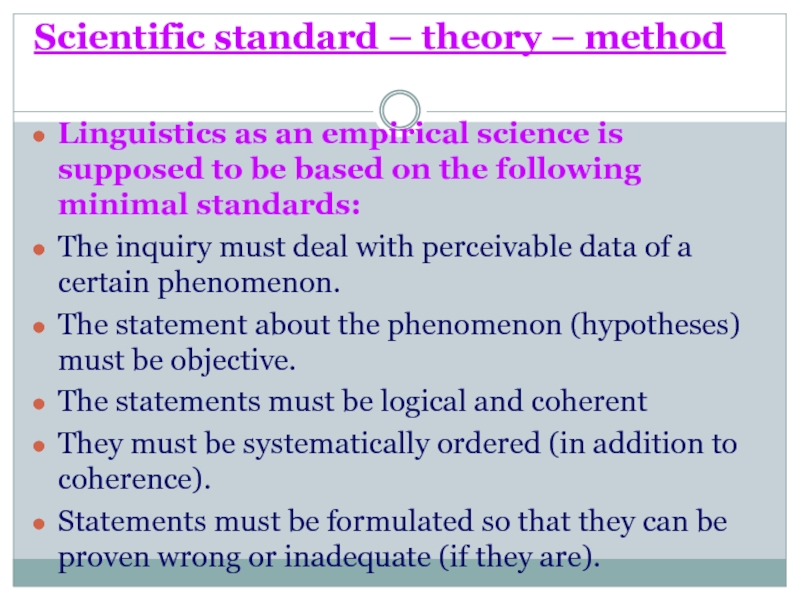
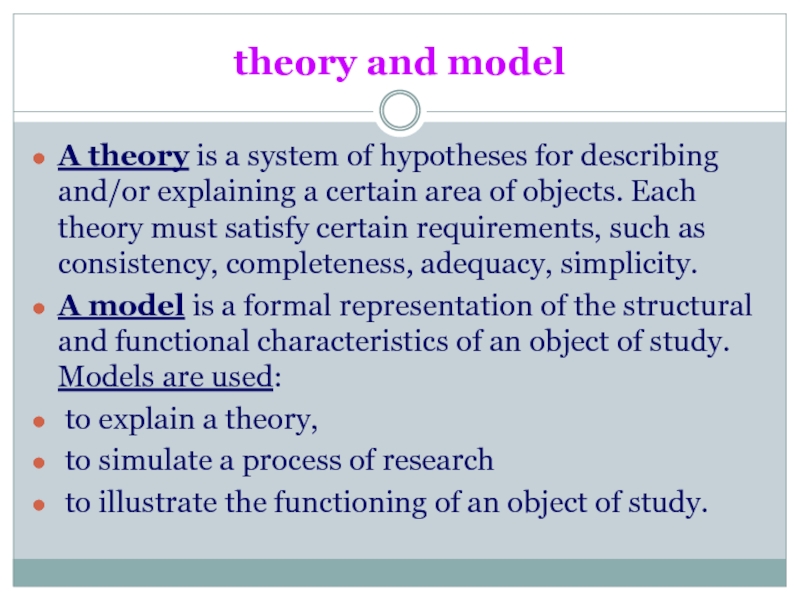
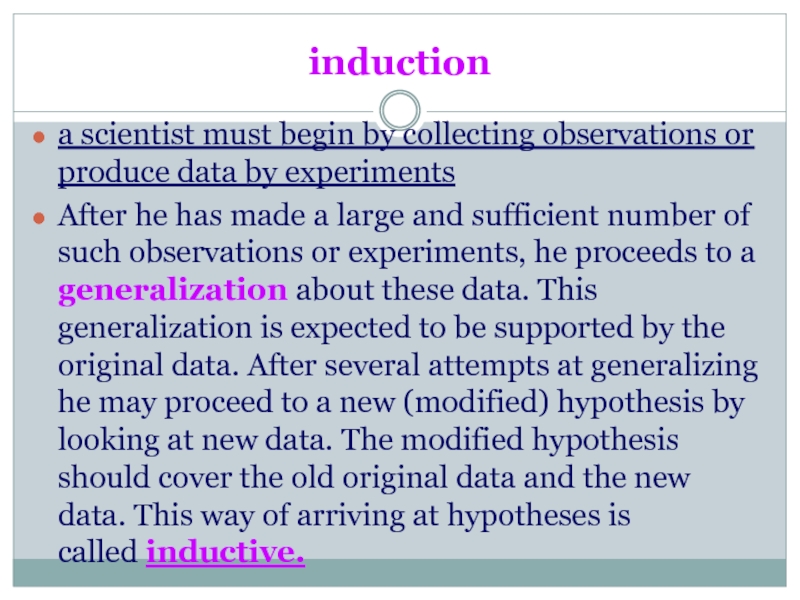

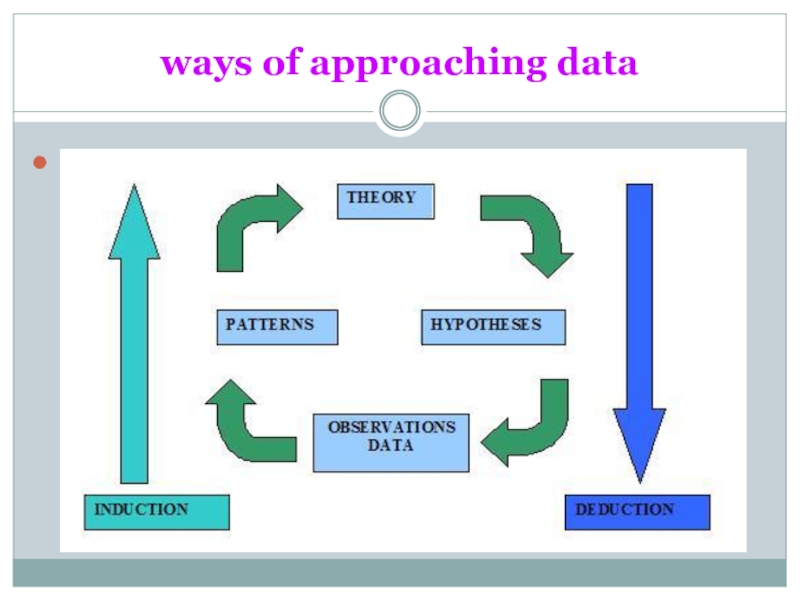
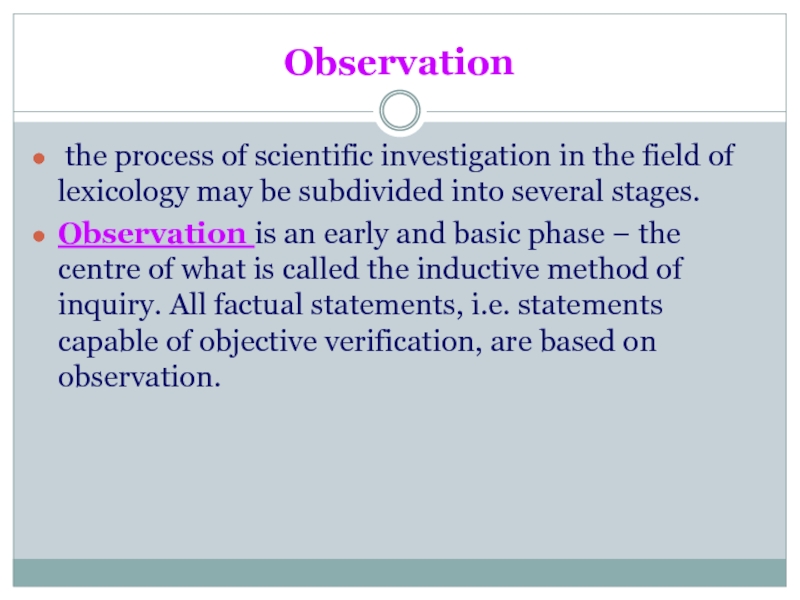
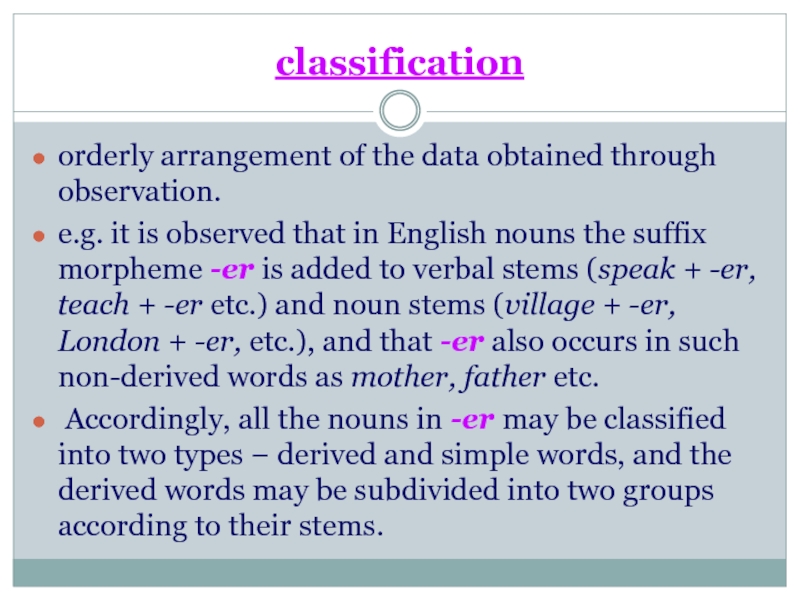
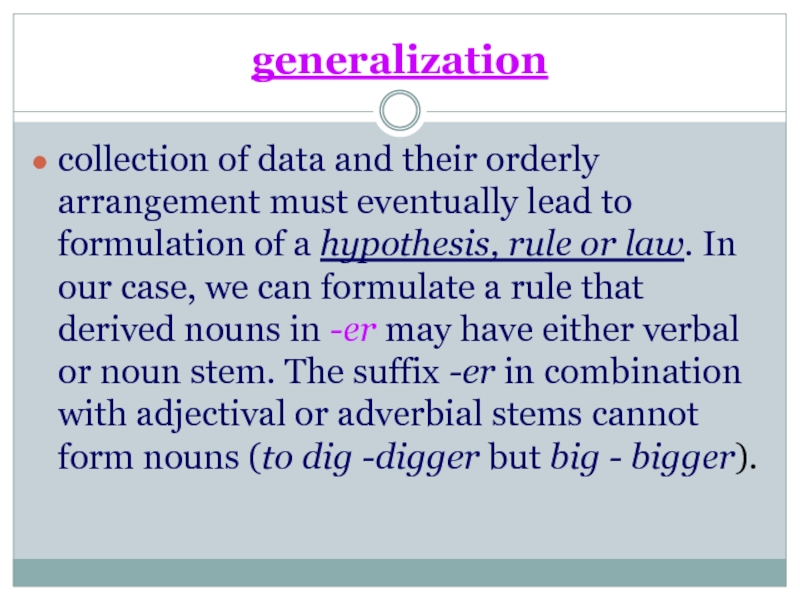
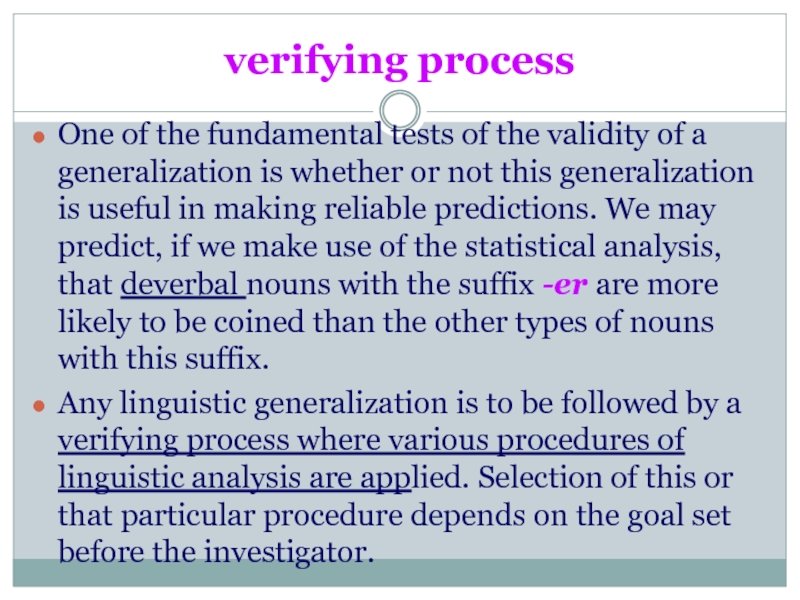
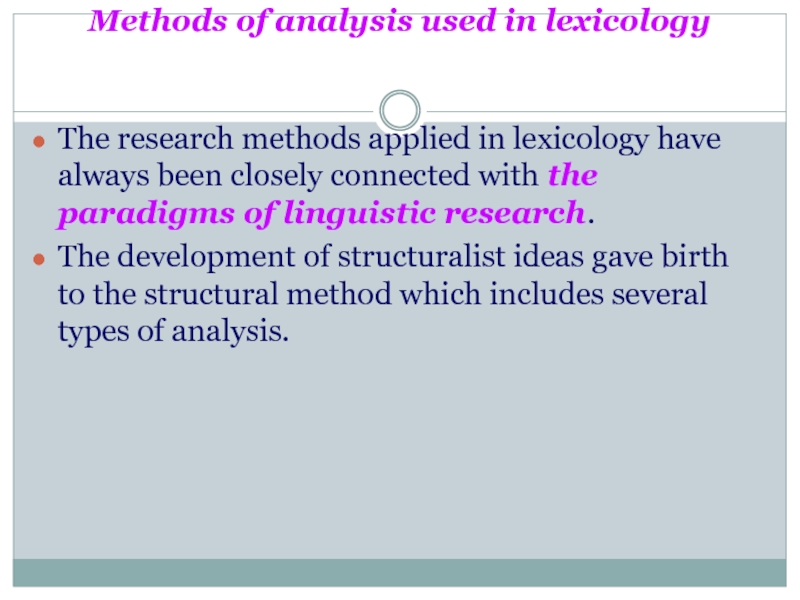

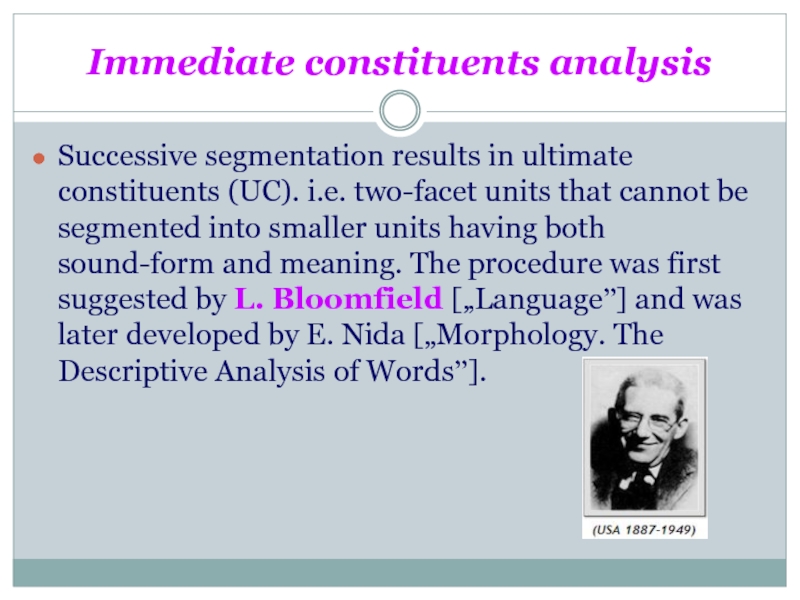
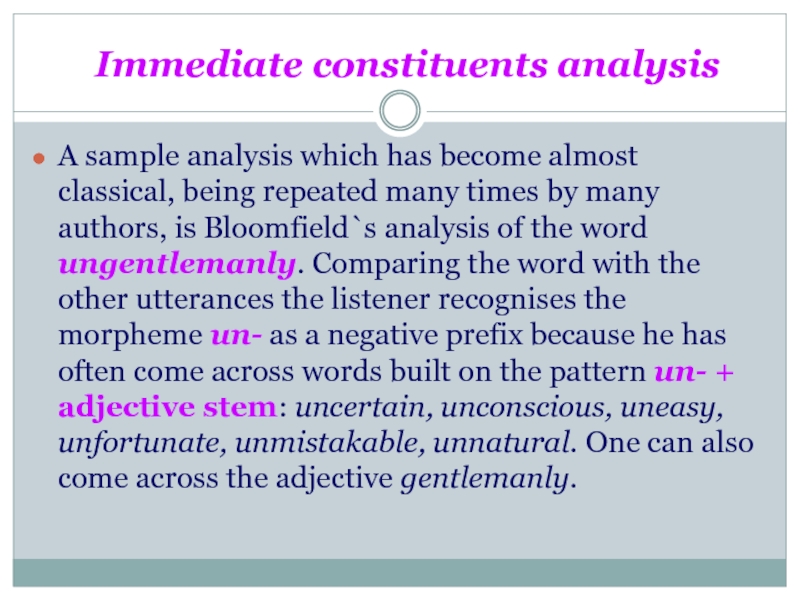
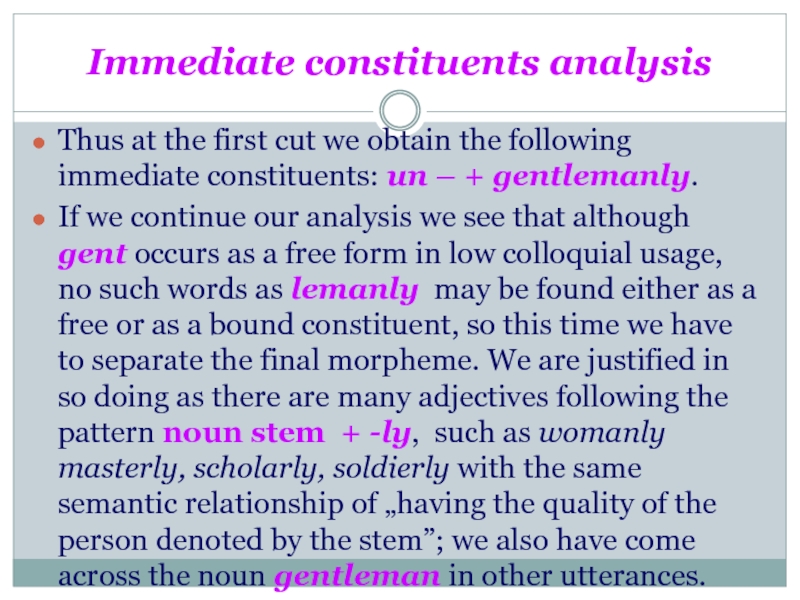
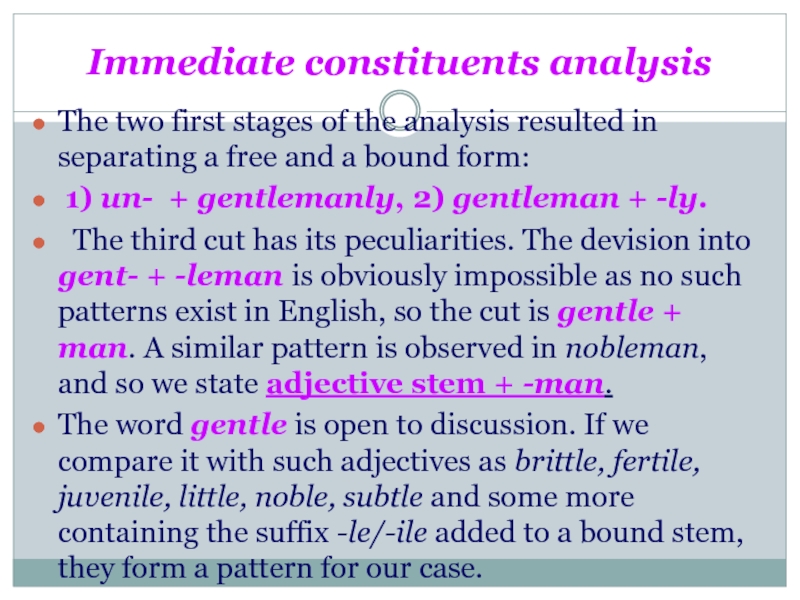
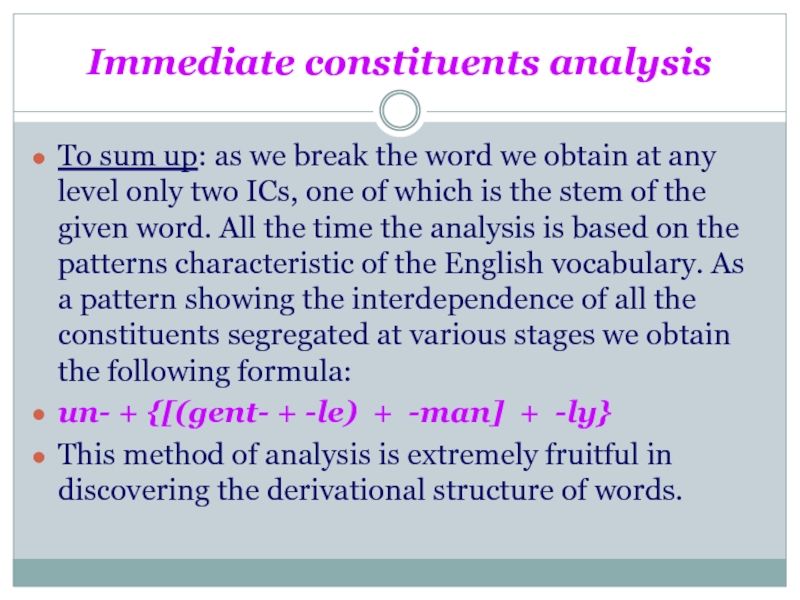

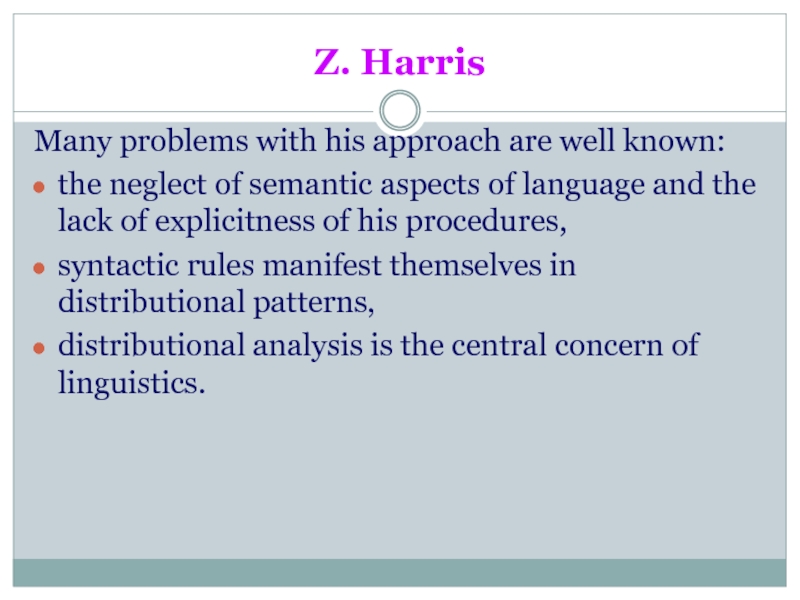
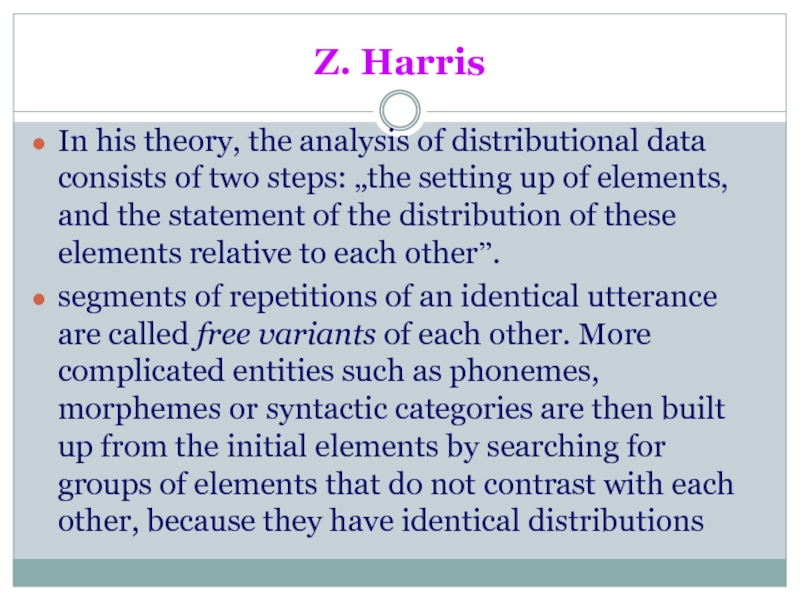
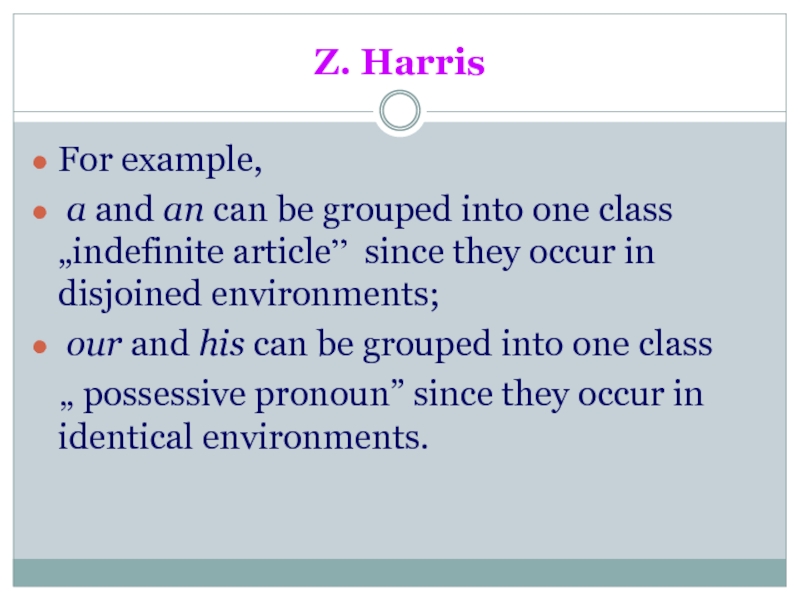

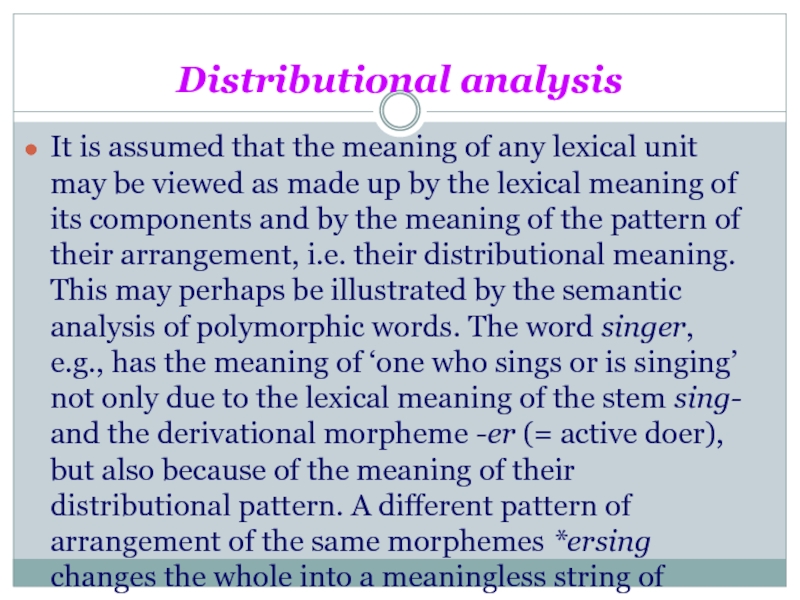
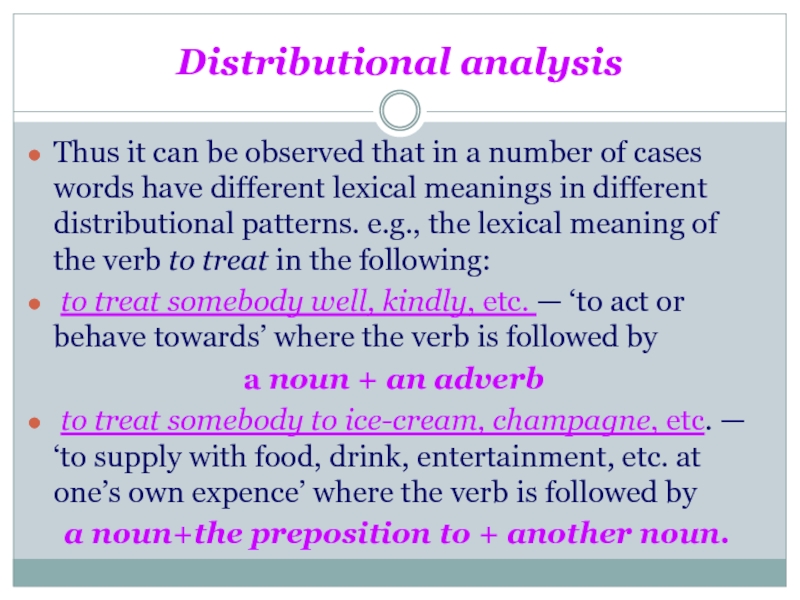
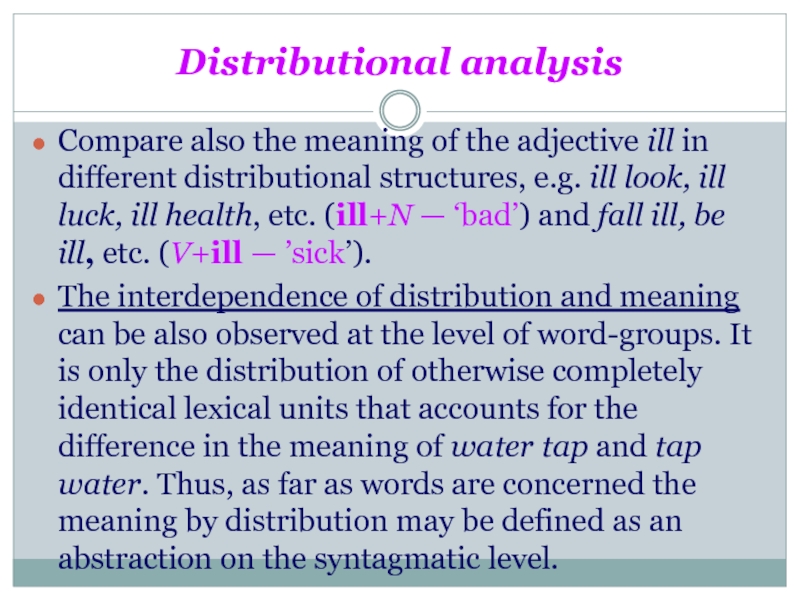


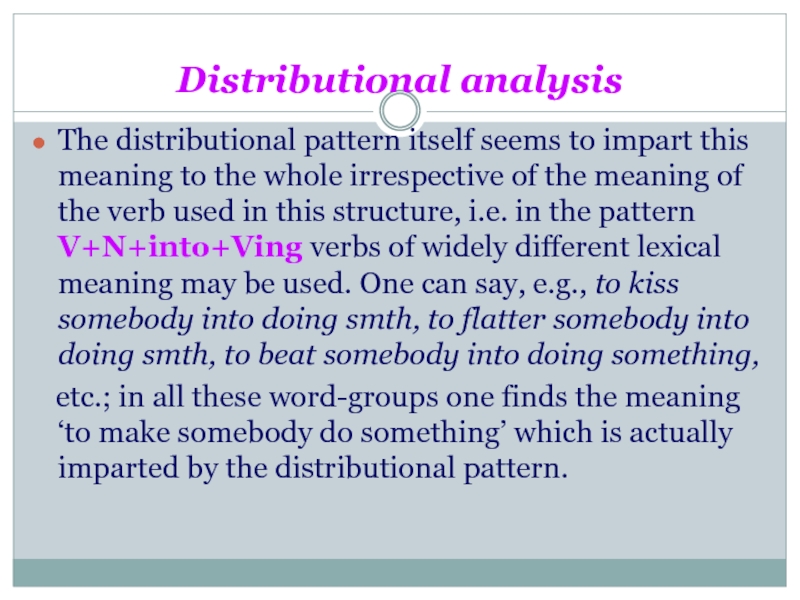

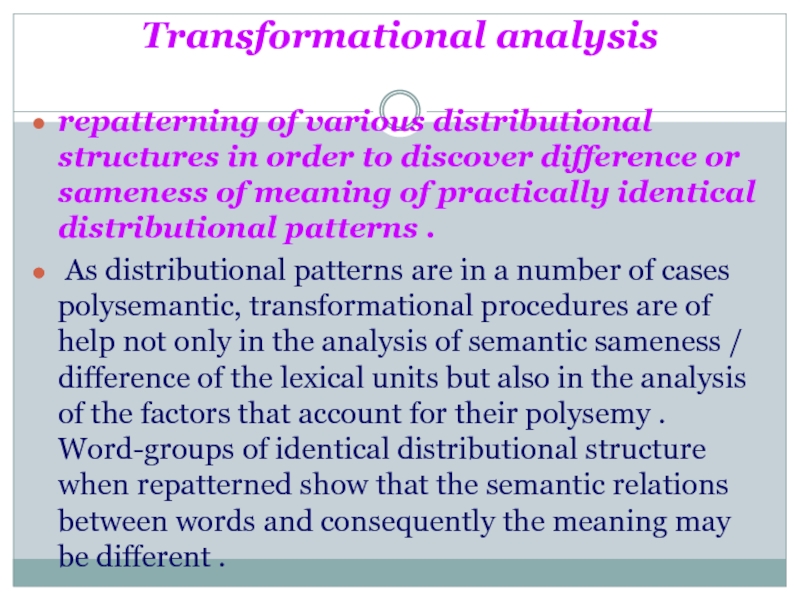

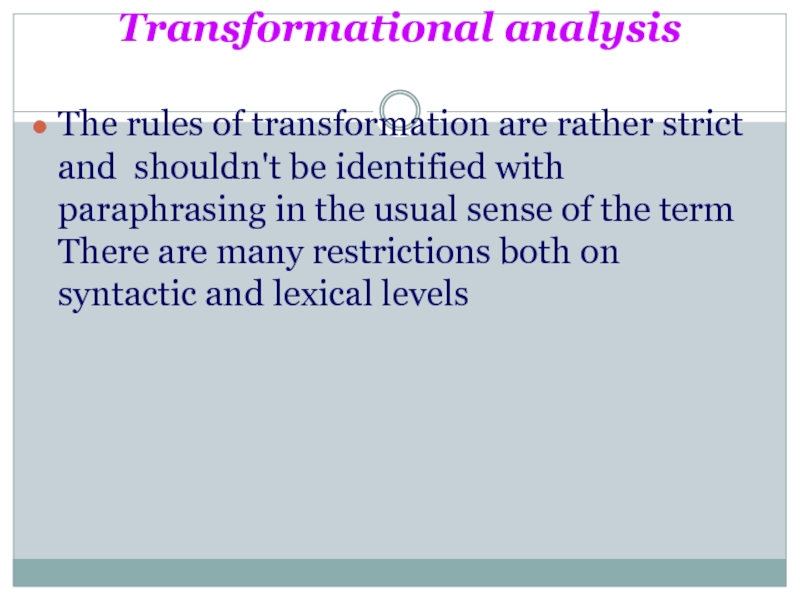
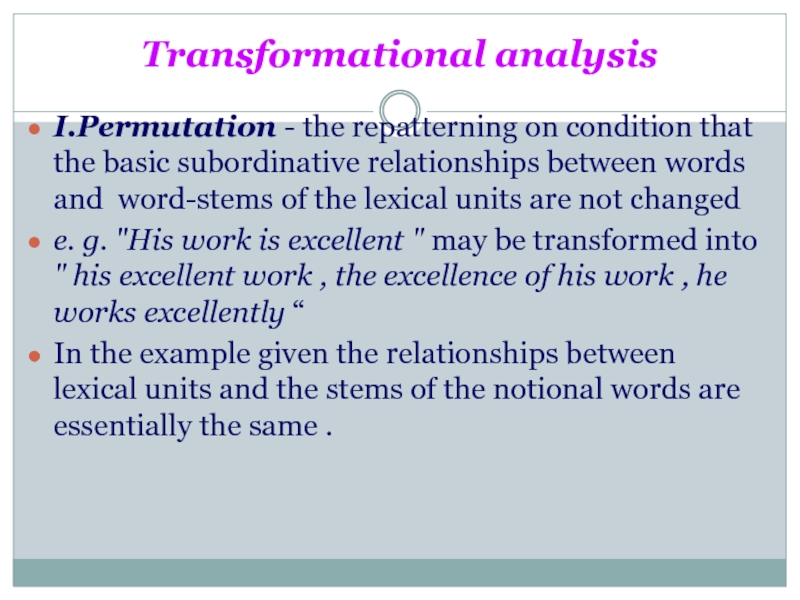
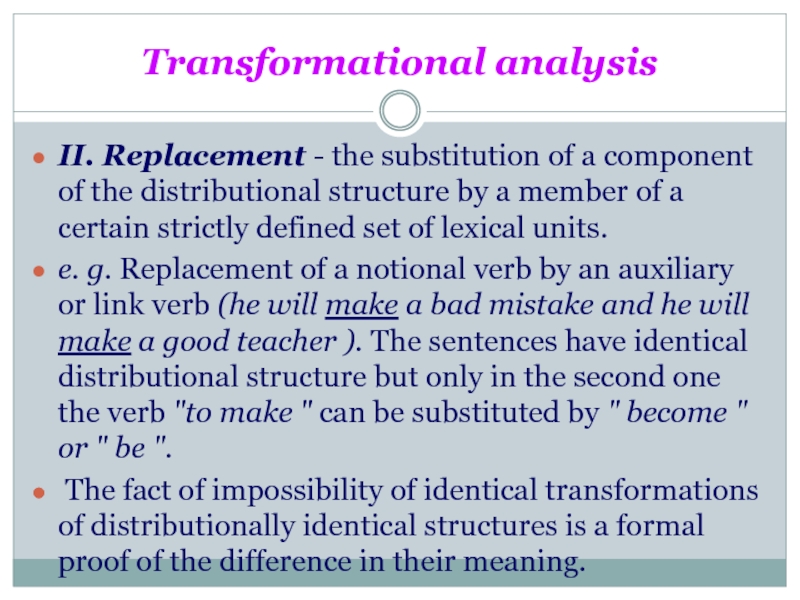
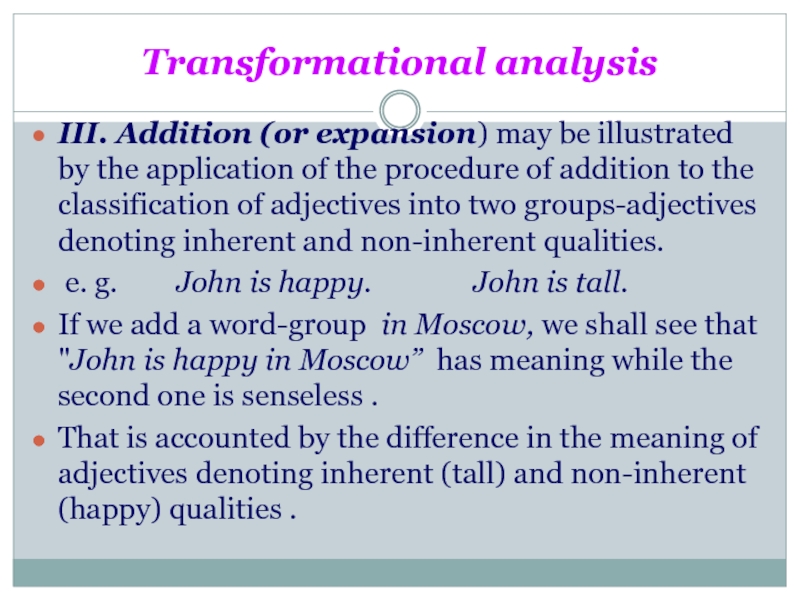
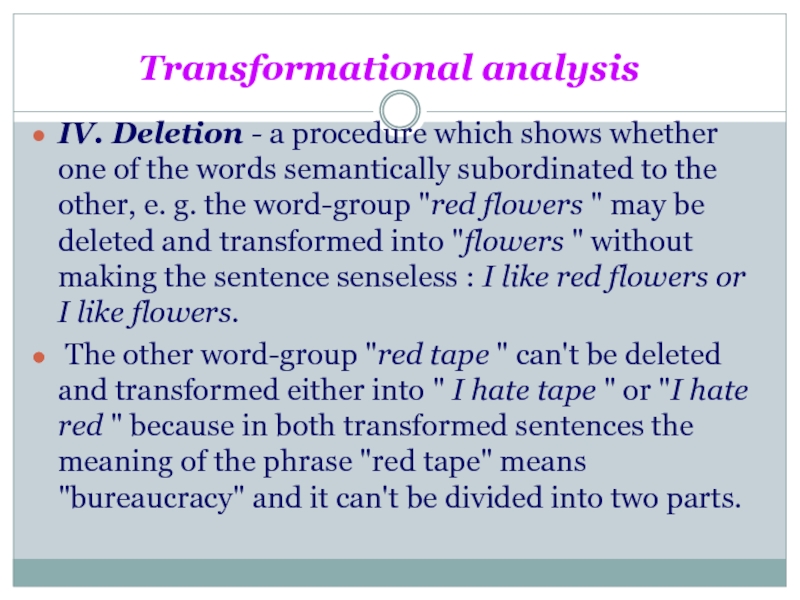
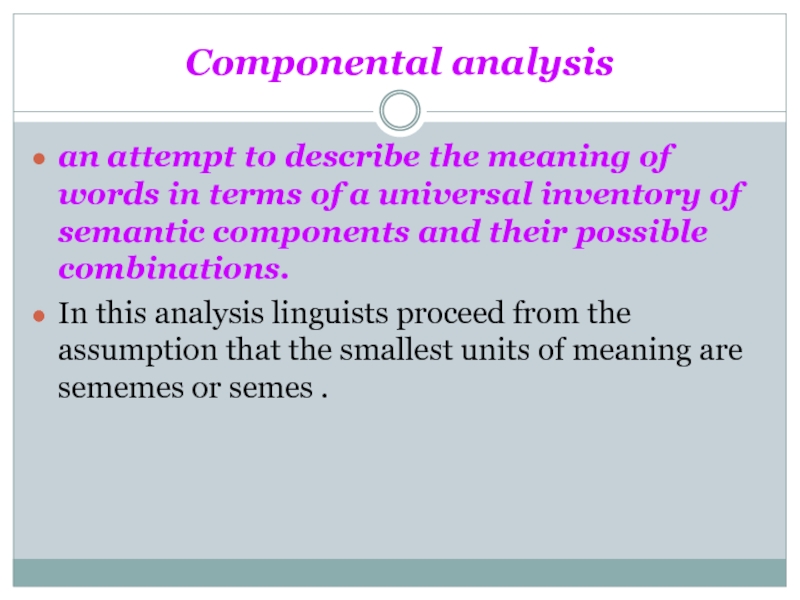
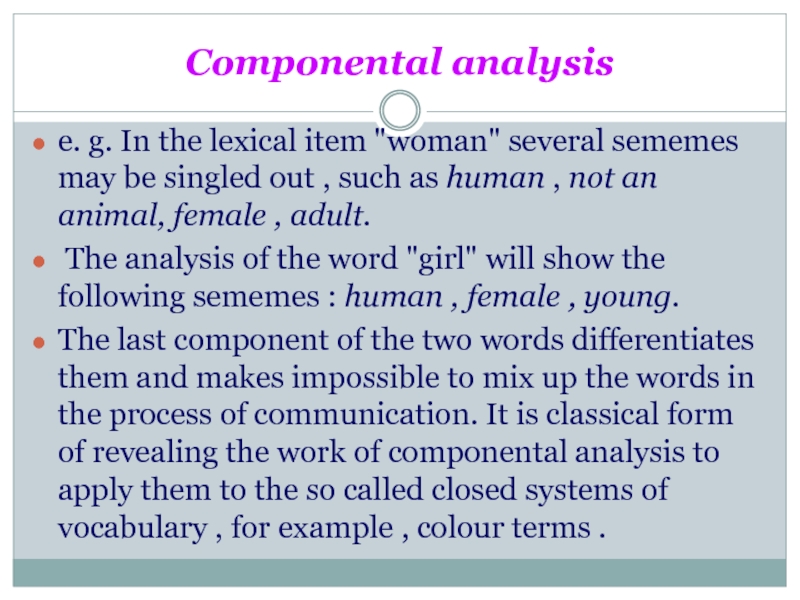
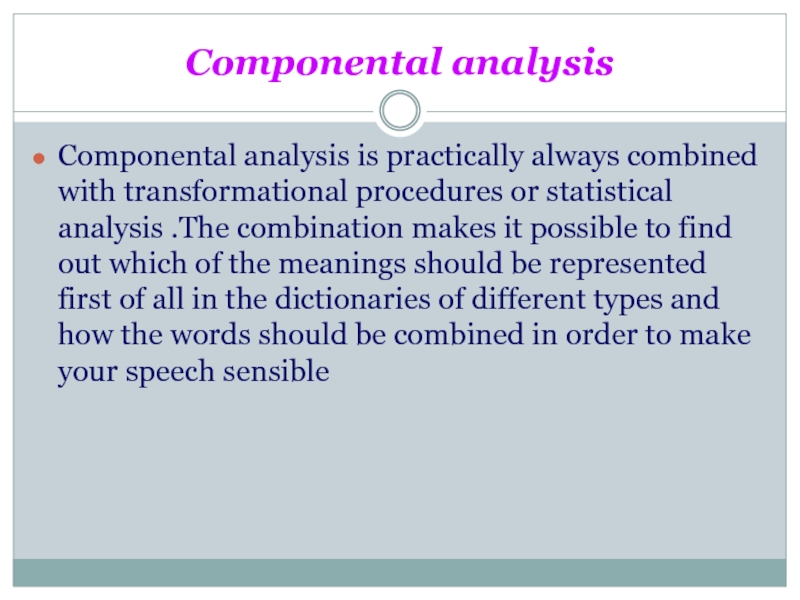


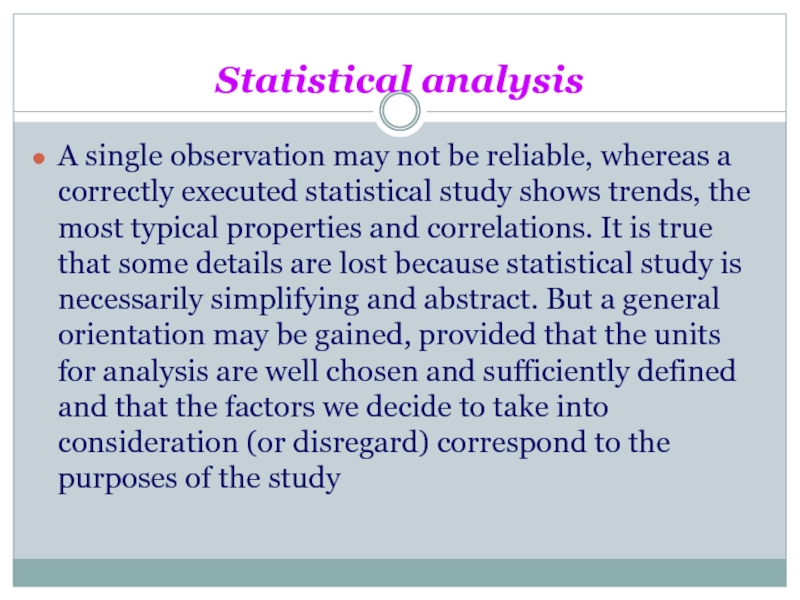

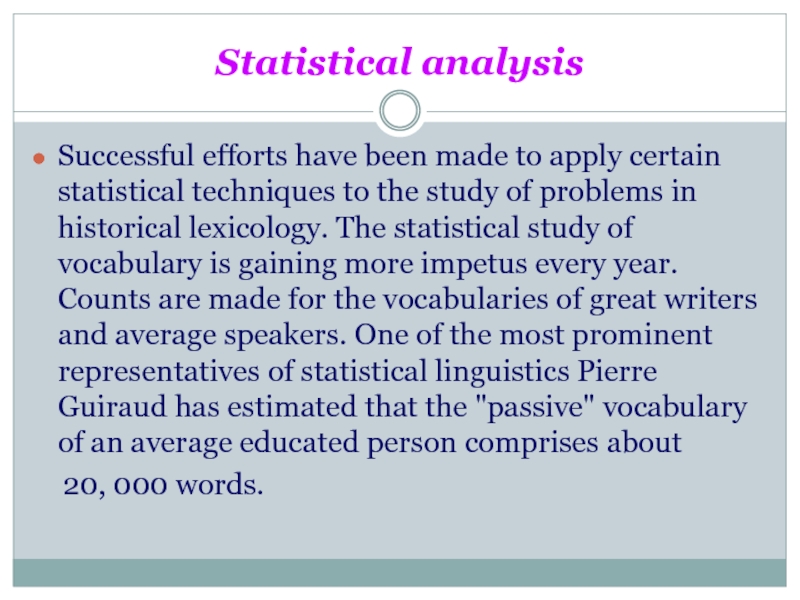
![Summing upno procedures or techniques exist that may serve as panaceas [ˌpænə'sɪə] for all the](/img/tmb/2/190706/c15502fa63d3ae91f787d6f66d64ed79-800x.jpg)

